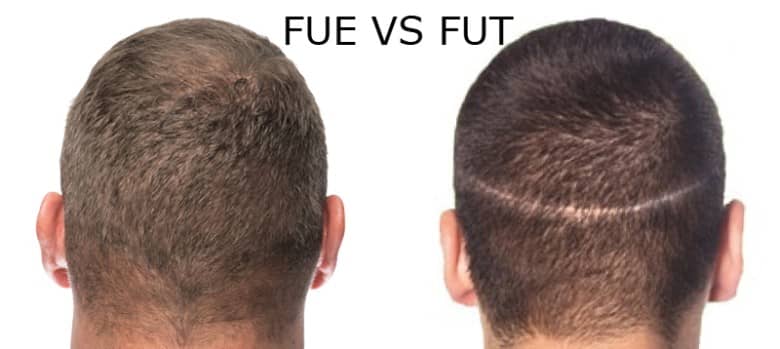Hair loss is a common concern affecting millions of people worldwide, often leading to a loss of confidence and self-esteem. Thanks to advancements in medical science, hair transplants have emerged as a reliable solution. Among the most popular methods are Follicular Unit Extraction (FUE) and Follicular Unit Transplantation (FUT). While both techniques aim to restore hair, FUE is increasingly being regarded as the superior choice. This article delves into the key differences between the two methods and highlights why FUE stands out as the better option.
Understanding FUE And FUT
Before we compare the two methods, it’s essential to understand how each procedure works.
Follicular Unit Extraction (FUE)
FUE involves the extraction of individual hair follicles from the donor area, typically the back or sides of the scalp, using a specialized punch tool. These follicles are then transplanted into the balding or thinning areas. The procedure is minimally invasive and does not involve any large incisions or stitches.
Follicular Unit Transplantation (FUT)
FUT, often referred to as the strip method, involves the surgical removal of a strip of scalp tissue from the donor area. The strip is then dissected into individual follicular units, which are transplanted into the recipient area. The donor area is stitched closed, leaving a linear scar.
Key Differences Between FUE And FUT
1. Scarring
- FUE: Leaves tiny, dot-like scars that are virtually undetectable, even with short hair.
- FUT: Leaves a linear scar on the donor area, which can be visible if the hair is cut too short.
2. Pain And Recovery Time
- FUE: Less invasive, leading to minimal discomfort and quicker recovery. Most patients resume normal activities within a few days.
- FUT: Involves a more extensive surgical procedure, resulting in longer recovery times and potentially more post-operative pain.
3. Hair Density And Natural Appearance
- FUE: Allows for the precise placement of follicles, leading to a more natural-looking hairline and even density.
- FUT: Can also deliver good results but may not provide the same level of precision in follicle placement.
4. Procedure Time
- FUE: Typically takes longer since each follicle is extracted individually. However, modern technology has significantly reduced procedure times.
- FUT: Generally quicker because larger sections of hair follicles are transplanted at once.
5. Donor Area Utilization
- FUE: Extracts follicles from various parts of the donor area, ensuring even utilization and preservation of the donor site.
- FUT: Extracts from a specific strip, which may limit future procedures if additional transplants are needed.
Advantages Of FUE Over FUT
- Minimally Invasive: FUE does not involve large incisions or stitches, making it a less invasive option. This reduces the risk of complications such as infection or excessive bleeding.
- Virtually Scar-Free: One of the most significant advantages of FUE is the absence of noticeable scarring. The tiny, dot-like scars fade over time and are hardly visible, even with short hairstyles. This is a significant advantage for individuals who prefer to keep their hair cropped.
- Faster Recovery: With no major surgical wounds to heal, FUE offers a quicker recovery time. Patients can often return to their daily routines within a few days, making it an ideal choice for those with busy lifestyles.
- Flexibility in Donor Area: FUE allows for the extraction of hair from various parts of the body, such as the beard or chest, providing additional donor options for individuals with limited scalp hair.
- Natural Results: The precision of FUE ensures that hair follicles are transplanted at the correct angle and direction, mimicking natural hair growth. This results in a more seamless and aesthetically pleasing outcome.
- Less Pain and Discomfort: Since FUE is less invasive, patients experience minimal pain during and after the procedure. Any discomfort is usually manageable with over-the-counter pain relievers.
- Lower Risk of Complications: The minimally invasive nature of FUE reduces the likelihood of complications such as nerve damage or severe scarring, which can occur with FUT.
Who Is A Suitable Candidate For FUE?
While FUE hair transplant is widely regarded as the better choice, it’s important to note that the suitability of the procedure depends on individual factors. Ideal candidates for FUE include:
- Individuals with sufficient donor hair on the scalp or other parts of the body.
- Those seeking a natural-looking hairline and minimal scarring.
- Patients who prefer shorter hairstyles.
- Individuals with active lifestyles who require a quicker recovery time.
Why FUT Might Still Be Considered
Despite its disadvantages, FUT may still be a viable option for some patients. It is particularly suitable for individuals who:
- Require a large number of grafts in a single session.
- Are not concerned about visible scarring due to longer hairstyles.
- Have a limited donor area and need to maximize the number of grafts extracted.
However, for most modern patients prioritizing aesthetics, comfort, and minimal downtime, FUE remains the preferred choice.
Choosing The Right Surgeon
Regardless of the method, the success of a hair transplant largely depends on the skill and experience of the surgeon. When selecting a clinic or practitioner, consider the following:
- Certifications and credentials.
- Before-and-after photos of previous patients.
- Patient reviews and testimonials.
- Transparency about costs and expected outcomes.
A skilled surgeon can help determine the most suitable procedure for your needs and ensure optimal results.
Conclusion:
When it comes to hair restoration, both FUE and FUT have their merits. However, FUE offers significant advantages in terms of aesthetics, recovery time, and patient comfort. Its minimally invasive nature, lack of noticeable scarring, and ability to deliver natural-looking results make it the superior choice for most individuals. If you’re considering a hair transplant, consult with a qualified specialist to explore your options and take the first step toward restoring your confidence and achieving a full head of hair.

